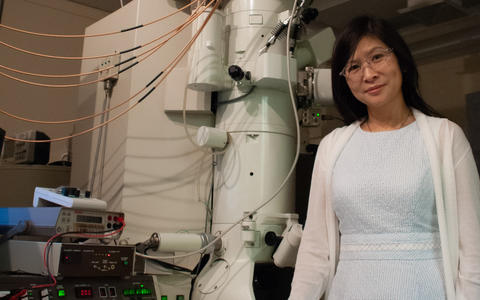
Closing in on a clear picture: NIST's June Lau, in collaboration with Brookhaven National Lab and Euclid Techlabs, is giving us a freeze-frame look at the smallest parts of our world.
Standard microscopes — like you might find in a high school chemistry class or forensic science lab — focus light through glass to see tiny things. But sometimes scientists need to get a look at things even smaller than the wavelength of light.
That’s where electron microscopes come in, using electrons to interact with the object you are trying to see. But what about super-small objects that are also moving super-fast? These objects show up under the electron microscope with a motion blur, like what our eyes perceive when we put some speed behind a fidget spinner.
The motion blur creates the perception of a shape that, up until now, we assumed was the shape of the object. That’s because most electron microscopes could only see atoms in space, not in time.
Now, June’s team and our collaborators at Brookhaven and Euclid Techlabs have invented a new type of electron microscope that brings time into the equation. They shoot microwaves at an arbitrary frequency through a waveguide, so that only electrons catching onto their desired wave can get through the microscope.
Bottom line — if you control the waves, you control the time frame. It’s a whole new level of photography, capturing atomic-scale still images midmotion.
Follow us on social media for more like this from all across NIST!

